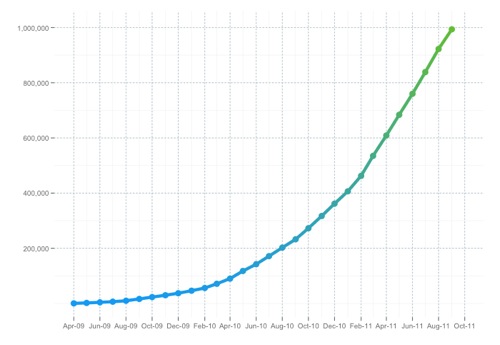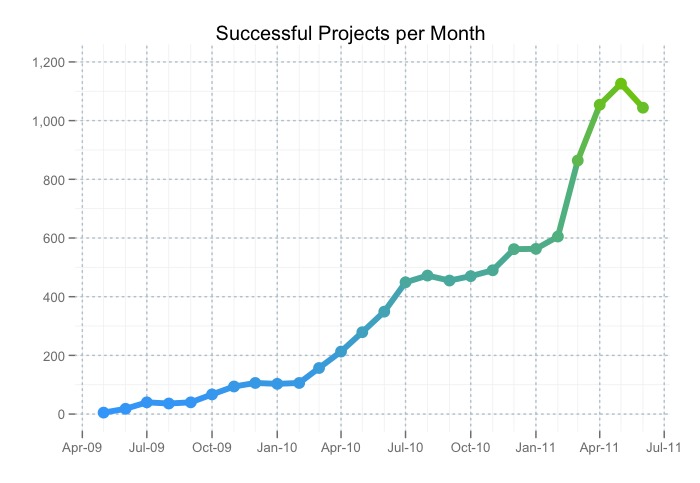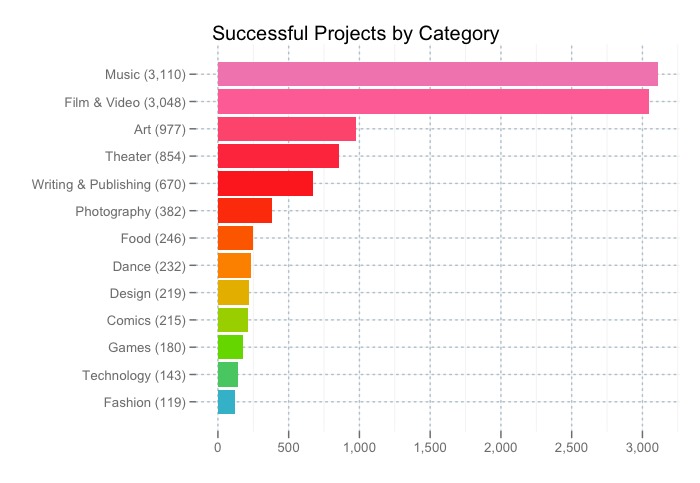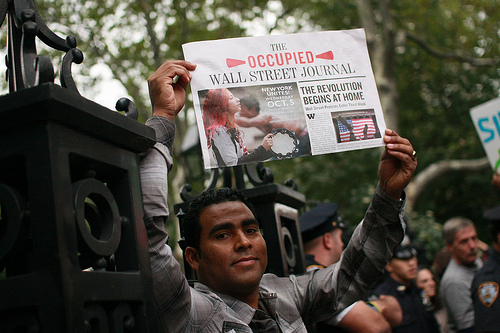When Kickstarter was launched in 2009, it seemed like a unlikely proposition: fund your passion projects with money donated by eager supporters? Get strangers to fund your dreams with only an idea and a good pitch? While there were precedents, such as the microfinance service Kiva, Kickstarter projects thrived on the goodwill of the crowd while the world economy was in the midst of the global recession. Yancey Strickler, one of Kickstarter’s founders, had his own reservations before starting the company, noting in a New York Times interview that his initial response to co-founder Perry Chen was, “I’m not so sure about this…If you let people vote for what they want — that’s ‘American Idol,’ that doesn’t produce great art.”
Yet in the past two years, crowdfunding has exploded, thanks in part to the Kickstarter’s “all-or-nothing” model for funding. It’s democracy in action: think you have a great idea? Convince enough people and you can make it a reality. If not, back to the drawing board. By turning collaborative funding into a high-stakes game, Kickstarter demands a certain level of quality from its creators, encourages that they work to promote it, and gives backers confidence that they’ll only pay for projects that achieve a critical mass of support. Even as alternative services continue to launch, serving different types of projects and audiences, many follow the model popularized by Kickstarter.
The momentum shows no signs of letting up. Yesterday, Kickstarter announced that they hit their one millionth backer, with adoption increasing exponentially: on their blog, Kickstarter notes that it took 16 months to reach the first 200,000 backers, while the last 200,000 signed on in only three months. Funding projects is habitual, according to Kickstarter’s figures. Out of 1,013,725 total backers, 166,823 have funded two or more projects, 66,676 have backed three or more, and 23,601 have backed five or more. This phenomenon echoes Shareable’s view that sharing is contagious, and one shareable act begets more.

In July, upon reaching 10,000 successfully funded projects, Kickstarter released metrics that revealed a 44% success rate among projects, and a rapid increase in the number of successful projects month-by-month.

Breaking down successful projects by category, Kickstarter revealed some useful insights on what types of projects get the most traction on their creative-oriented platform. Music, film and video are the clear frontrunners:

Who would have thought that tapping your networks for donations would prove such a sustainable model? Certainly not myself — last year, I discussed my fear of impending crowdfunding fatigue from friends and colleagues who had been tapped for donations one too many times. But so far, the numbers haven’t borne this out. The sheer breadth of successful campaigns launched in the past year are impressive, including feature films, web series, musicians releasing records, web startups, gadget accessories, art projects, homebrew video games, urban farms, journalism, open-source projects, road trips, social activism, small businesses, even documentaries about the sharing economy — the list goes on. Even if some of the projects are silly and ephemeral, that breadth demonstrates the fundamental strength of the platform.
Kickstarter is the most visible of all the services, but far from the only one. A wide array of services aim to serve different constituencies. Kiva is one of the originals, garnering the attention of Oprah and facilitating $240,410,450 in microloans since its inception in 2005. The video “Intercontinental Ballistic Microfinance” visualizes the movement of loans around the world since the service launched in 2005:
This spreadsheet curated by Joe Brewer and Suresh Fernando, who are in the process of writing a Crowdfunding Manual for Social Change (excerpts of which are included in this Crowdfunding Nation series) demonstrates this wealth of options. There are creative-focused ones such as IndieGoGo, and platforms specific to persuits such as music, publishing, and even wine making. There is the journalism-focused platform spot.us, a “community-funded reporting” platform which Shareable and the Public Press have used to help fund investigative reporting. Peer-to-peer lending services like LendingClub aim to remove large banks as the middlemen for loans. The Occupy Wall Street Journal, the occupation’s newspaper of record, has raised $75,690 in funding on Kickstarter to date to cover publishing costs. Concurrently, there’s an increasing number of social movement-focused platforms, such as the social enterprise-focused Start Some Good, and non profit-centric CauseVox.

Photo by LianaAn on Flickr. (CC BY-SA)
With such growth, critiques are inevitable. Perhaps most common is the fear that we’re in a crowdfunding “bubble”. In a blog post, designer Andy Mangold presented some well-directed critiques before he launched a Kickstarter project, noting that selling an idea is much easier than selling an actual product, that these platforms prefer those with large established networks, and that the lack of insurance for backers could lead to backlash if the creators don’t deliver what was promised.
Consider the hype and backlash cycle endured by the people behind Diaspora, one of the most high-profile crowdfunded projects to date. The enthusiasm that greeted Diaspora’s plan to build an open-source alternative to Facebook quickly curdled among some supporters and journalists who felt that the development process took too long and were disappointed by the limited alpha release. While gathering funding from your networks and supporters can make otherwise impossible projects possible, creators may then face expectations they can’t meet. In a media climate where everyone has a voice on blogs and social media, excitement can turn to anger when money has been offered up front.

The tech industry’s backlash to Diaspora was quick and harsh. Via Download Squad.
That said, crowdfunding’s momentum shows no signs of flagging. There’s no doubt that as adoption increases, so does competition, making it more crucial than ever to stand out from the crowd. Before starting a campaign, do your research, and be prepared to work hard. There are many how-to guides, including Shareable’s guides on how to run your own campaign and what you’ll need to start. Metafliter founder and serial backer Matt Haughey offers a useful list of suggestions from the perspective of a funder, and the Modest Guide to Success on Kickstarter offers particularly useful advices. Common among the various how-to posts are that you must define success beforehand, communicate with backers transparently, and carefully structure the reward system to succeed. In addition, Kickstarter’s online school of how-tos and FAQS is a must-read no matter what service you choose to use.
Look at the profit/loss statements released by those who have successfully funded similar projects — Diaspora released a detailed statement after their campaign, breaking down Kickstarter’s fees and promotional costs, and many have released similar statements, such as the documentary filmmaker Joey Daoud. Be realistic, and make sure you’re setting the goal at something achievable — if you can’t hit that total, you’ll be walking away with nothing but squandered good will.

One of the most high-profile Kickstarter projects to date, TikTok is a watch strap for the iPod Nano that was highlighted in the latest Apple keynote.
Living in an era of unprecedented connectivity, crowdfunding represents a new way for creators, makers, entrepreneurs and social activists to realize their dreams. Moreover, the collaboration enabled by peer-to-peer social lending and funding platforms represents a unique opportunity presented by The New Sharing Economy.
Crowdfunding will continue to evolve. Services such as Sprowd aim to make it a credible way to fund startups. Congressional Bill HR2930 could make it easier for businesses to raise equity from investors through campaigns. Joe Brewer and Suresh Fernando believe crowdfunding is a way social entrepreneurs and activists can fund the commons, inspire engagement, and foster movements. The rise of mobile devices suggest immediate and location-aware platforms that could support small-scale projects as they gestate.
Will the bubble burst? It’s too early to say, but the numbers show that the trajectory remains on a steadily upward path. No matter its future, Crowdfunding represents a collaboration and funding opportunity that would have been unthinkable only a decade ago, with a transformative impact on creators, makers, entrepreneurs, and social movements that cannot be understated.
——
Other entries in Crowdfunding Nation, Shareable’s week-long series on crowdfunding:
Features:
- Crowdfunding Nation: The Rise and Evolution of Collaborative Funding
- Crowdfunding Social Change
- Of The Crowd: Q&A W/ Kickstarter’s Daniella Jaeger
How-tos:
- Crowdfunding and the Law
- What You’ll Need to Run a Successful Crowdfunding Campaign
- How To Run a Successful Crowdfunding Campaign
Blog posts:
- Why Crowdfunding Isn’t Really About Money
- The Top Shareable Crowdfunded Projects
- The Enabling City: Crowdfunding Urban Livability
- The Motorhome Diaries: The Dance of Crowdfunding
- Loudsauce Crowdfunds Advertising That Matters









